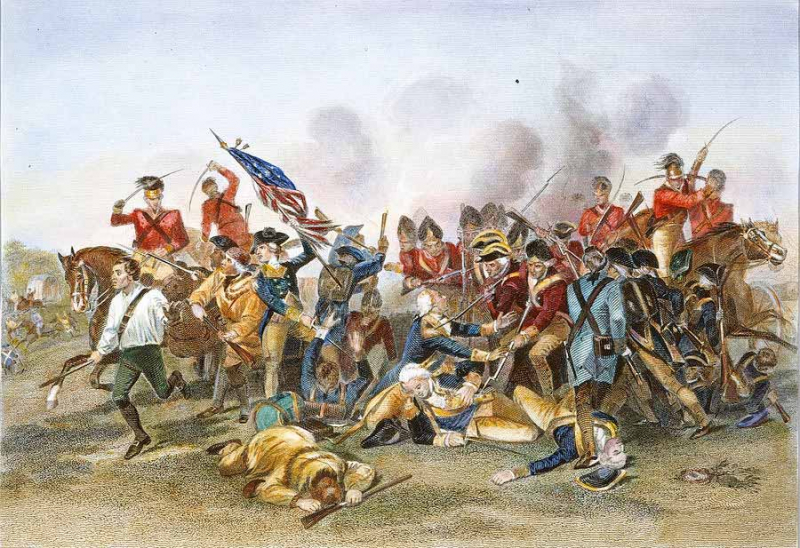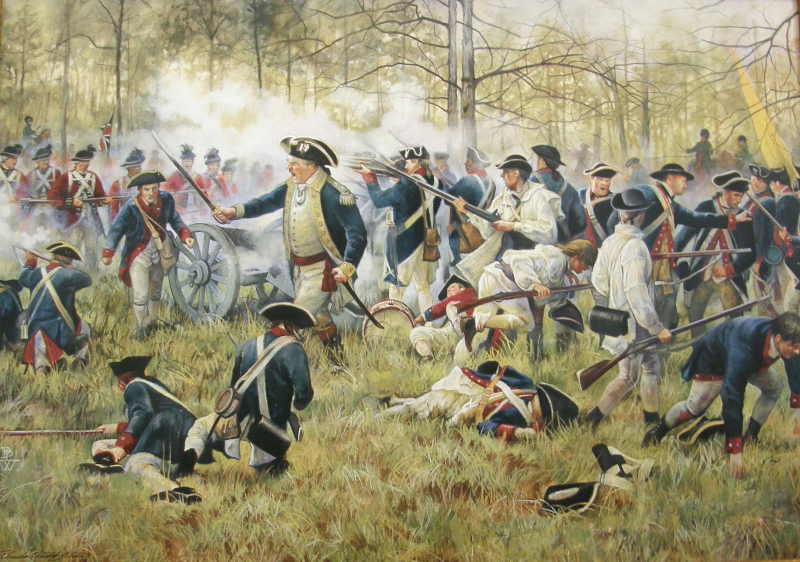The Southern Campaign began with American disasters
At the beginning of the Southern Campaign, on December 26, 1779, Sir Henry Clinton sailed with a British expeditionary force from New York bound for Charleston, South Carolina. The city was defended by Major General Benjamin Lincoln’s American army of 5,000 men. Clinton laid siege to Charleston beginning in early April and on May 12, 1780, Lincoln surrendered. The following month, Clinton returned to New York and left Lord Charles Cornwallis in command.
Cornwallis soundly defeated Continentals under Major General Horatio Gates at the Battle of Camden in the middle of August. The Battle of Camden was one of several devastating defeats suffered by the Americans in the early stages of the British military offensive in the South. When the British advanced and presented bayonets, the Virginians immediately turned and ran. Their flight carried North Carolina militia in the center of Gates's line and the American position quickly collapsed. Gates lost 1,900 of the 3,400 men engaged during the battle. Gates's defeat cleared South Carolina of organized American resistance and opened the way for Cornwallis to invade North Carolina. Approximately two months after Camden, Maj. Gen. Nathanael Greene accepted the command of the Southern Department and replaced the one-time hero of Saratoga. Greene went on to play a critical role in the Carolinas, directing operations that eventually led to the American victory.












